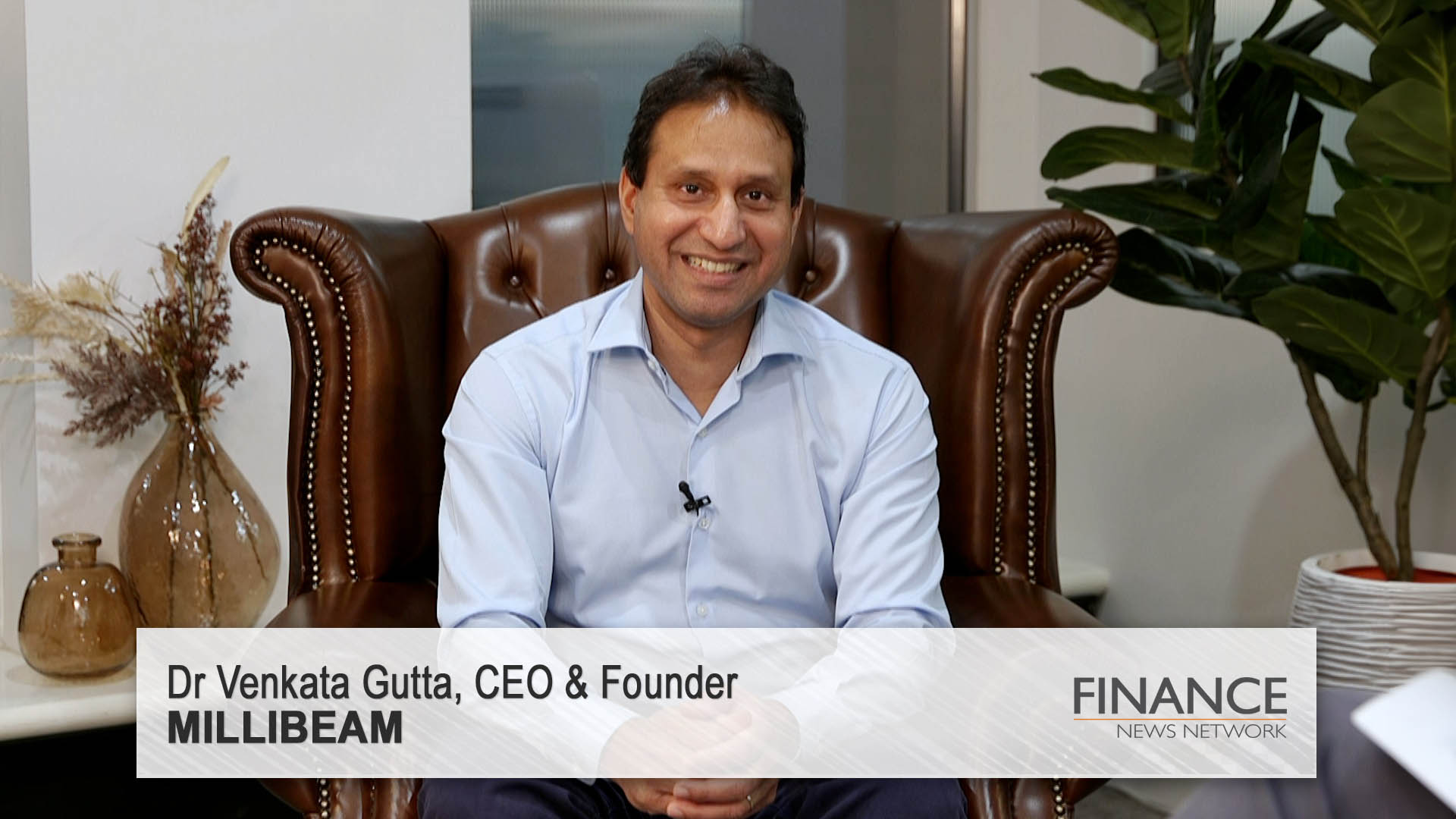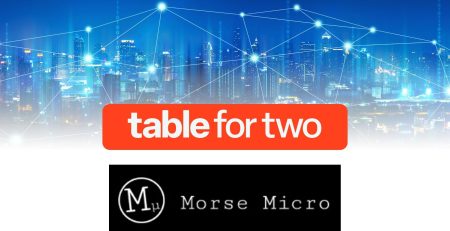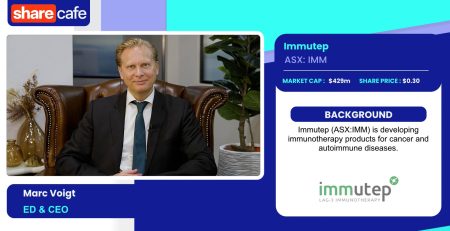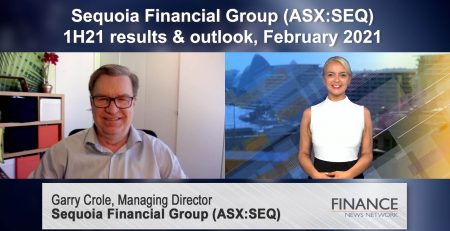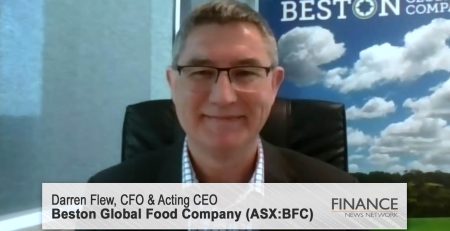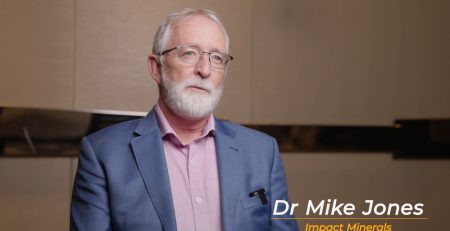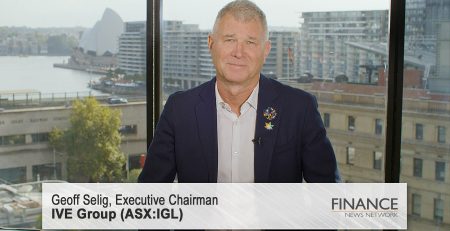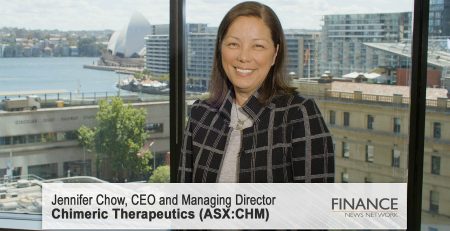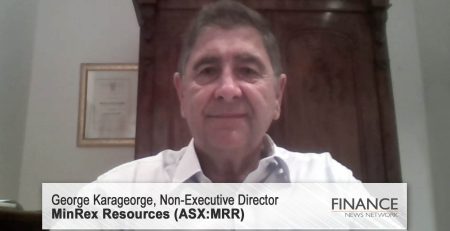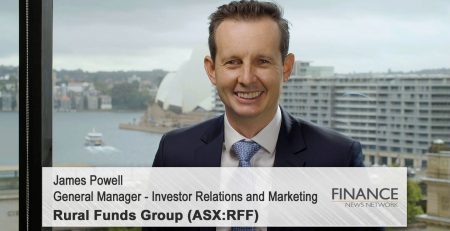Beyond 5G: How MILLIBEAM is revolutionising millimetre-wave technology
Venkata Gutta, CEO and Founder of MILLIBEAM, discusses the company’s mission to make millimetre-wave technology cost-effective and scalable.
Paul Sanger: I'm Paul Sanger for the Finance News Network, and today, I have the pleasure of speaking with Venkata Gutta. Venkata is an entrepreneur and engineer with vast experience in the semiconductor industry. As the CEO and founder of MILLIBEAM, an Australian fabless semiconductor company, he has dedicated his career to developing cutting-edge radio chipsets that tackle key challenges in mmWave 5G and beyond. Venkata's journey began with RF and mmWave IC design engineering, leading to numerous successful projects for global semiconductor companies. With a PhD in microwave millimetre-wave electronics, he's at the forefront of revolutionising the telecommunications space. Welcome to the network, Venkata.
Venkata Gutta: Thanks, Paul. Great to be here.
Paul Sanger: Good to have you here. Let's kick things off, Venkata, maybe with a bit of an overview of what MILLIBEAM does.
Venkata Gutta: MILLIBEAM is a company that essentially builds innovative RF and millimetre-wave semiconductor solutions for the telco space, mobile phones, or dual-use space as well. There's more SATCOMs and defence applications. Our goal is to try to build solutions that will bring millimetre wave into a mass market technology. Today, it is not. Millimetre waves have been… It was discovered in 1890s, but there has never been a mass market in millimetre waves, and 5G was supposed to change that, but it hasn't happened, and our goal is to bring that to the forefront.
Paul Sanger: Fantastic. And can you tell me more about your vision for MILLIBEAM and how your extensive experience in RF and mmWave IC design has helped shape the development of your company?
Venkata Gutta: Yeah, like I said before, our goal is to bring millimetre wave to the forefront in a way that becomes a low-cost technology. Today, when you build a network or device with millimetre-wave technology, also millimetre-wave semiconductors, what happens is that the signal doesn't go far enough, the energy efficiency is poor, as a result of which you end up building a system that's extremely expensive because you need more base stations to create the coverage, you need redundancy to build a reliability into the coverage as well. So all these things mean that if you had to build a network in Sydney, for instance, end-to-end millimetre network because the data rates are so high, it ends up being extremely expensive, to the tune of US$30bn to US$40bn.
Now, imagine there are 10 cities like Sydney, or maybe 20, 30 cities, global cities, we're talking a trillion dollars. Pretty soon, global coverage, we're talking about trillions of dollars. So, millimetre technology exists, but it's not scalable in a cost-effective way. And our vision is to not to make the technology cheaper by making cheaper things, but to bring performance enhancements in a way that the technology becomes cheaper.
Paul Sanger: Fantastic. And MILLIBEAM is addressing some significant challenges in the adoption of mmWave 5G, particularly related to power consumption and coverage limitations, as you just touched on. Could you explain how your technology tackles these issues and what makes it stand out in the semiconductor space?
Venkata Gutta: Thank you. Yeah. Most of the companies are focused on building millimeter-wave technology into the recent standards, like 5G, focused on trying to make really cheap chipsets. So, the downside of that is that they have had to compromise in performance. The thinking ran something like this: "There's going to be billions of base stations needed to create this millimetre-wave 5G coverage. Hence, we will sell a huge number of chips, and they all have to be low cost." But what it meant was that the cost of the chipset was only a fraction of the cost of the base station. So, when you create this sort of technology where it requires more and more base stations, it ends up with the technology being very expensive, even when the chipsets were very cheap. So, to avoid this sort of problem, we need to make the chipsets have much higher power, or at least capable of higher power, and also very high in energy efficiency as well because these are the two factors that actually change the cost dynamics of the technology.
And our goal is to build our long-range chipsets that can overcome propagation losses or any such challenges the radio link built on using these devices has and also we have much higher energy efficiency as a means to requiring less power to power these things. And we do this by not focusing on making cheap chipsets, but how we… There are semiconductor technology limitations. That's what's actually making people choose certain processes for low cost. And our focus is, okay, these physical limitations exist in the atmosphere when the signals are going and in the semiconductor technology. How do we overcome them? So, we're not trying to say we're creating a magical material or something, but with existing limitations, how do we circumvent them? And that means that we have to come up with new radio architectures. The way radio is built hasn't changed a lot in the last hundred years or so. And our focus is how do we implement these radio technologies at a chip level as a means to overcome these performance limitations both in the air and in the semiconductor medium as well.
Paul Sanger: Got you. And with MILLIBEAM's plans to enhance radio signal range and improve energy efficiency by 25 per cent over the next five years, who are the primary beneficiaries of your technology and how do you envision this impacting the global 5G and 6G markets?
Venkata Gutta: Yeah, I think, fundamentally, the people who are going to benefit are the telcos. We sell these chips to base station vendors, big OEMs, and they'll sell it to the telco. If you look back to what's happened in the last five to almost 10 years now since 5G was actually mooted, there hasn't been as much deployment of 5G. There has been a deployment of 5G at the lower frequency bands, but very little of millimetre-wave 5G. And the reason for that is the cost reason I explained, and there's not enough return of investment on the telco part to actually spend a trillion dollars or more in capital expenditure as a means to roll out this network because, typically, the base station vendors were the ones who were making a lot more money than the telcos. So, that means that they can't get people to pay more for the extra data rate.
And the thinking becomes, "We still need these technologies to make the world a productive place." Then, how do we make the technologies cheaper? Because the telcos are not thinking about, "Okay, we have a low frequency based in our 5G or millimetre 5G. We're going to choose this because it's cheaper deployment." So, our goal is to change that conversation into "How do we make the technology work in such a way that the telcos don't need to make that choice?" So, I would say the telcos and the people they serve, the general public, would be the primary beneficiaries, even if there are people between us and them in the supply chains.
Paul Sanger: You also mentioned that MILLIBEAM is expanding its presence in Victoria in Australia through research partnerships and hiring more engineers. Could you share more about how this will contribute to both local job growth and the overall deployment of your technology?
Venkata Gutta: Yeah, a good question. We started as a company based in… Our headquarters is in Sydney, so the majority of the staff are in Sydney, and we have a design centre in Melbourne. We have some overseas staff as well. But, primarily, all the R&D, everything related to engineering, is in Australia. If you think about Australia, most of the research and development is based around the major cities, maybe Sydney, Melbourne, Brisbane, Adelaide to that extent. So, Sydney, we got a lot of engineers that exist today, but there's not a big enough… Sydney by itself is not a huge-enough talent pool to tap into, and Melbourne or Victoria provides a different degree of freedom for that from that instance. And the Victorian government is doing a lot to build a lot of infrastructure around Port Melbourne and other places. We want to tap into what is possible around Australia as a means for the talent, for the infrastructure. We plan to build a packaging facility in Victoria. And that where I mentioned with the Port Melbourne, the growth around that helps as well. So we want to see what we can do in Australia before we say, "Okay, this is the limit of what we can do here, and we need to go beyond that." But, first, we want to be able to build what we can here before we think beyond that point.
Paul Sanger: Taking this from a slightly different tack now, how does being a fablesss semiconductor company allow MILLIBEAM and other Australian companies to contribute significantly to the global semiconductor industry without the need for mass investments in large scale labs like those in Taiwan?
Venkata Gutta: Yeah, again, a great question. There's this common belief that you need like a billion dollars to build a fab, and every semiconductor company needs a fab. That was the model maybe 50 years ago when every semiconductor company had a fab of their own. And pretty soon, that model disappeared. What has become is there's foundries that are built solely for the purpose of servicing fabless semiconductors like ours, and they're called a pure-play foundry model. So, they don't actually build any components and devices. They don't sell them. They simply have the semiconductor process, the technology behind it, and they provide the fabrication for you to use a process and build a chip out. So, companies like ours have the IP. We use their process to implement the IP on a chip on a particular process, and we get it fabricated there. As a result, foundries like this sometimes service thousands of companies, so most of the companies don't need to have foundries. Maybe there are only 50 companies in the world that have foundries, and there may be thousands of fabless companies. The key point I'm trying to make is that you don't need to be a fully-fledged foundry-based company to actually be successful in the semiconductor space. And I think this is really relevant in Australia because we obviously can't provide this kind of capital to create these kind of foundries. And that's why if you see… foundries are located in a very few parts of the world. They're concentrated there where the talent pool, the capital, everything else that needs to support the ecosystem is present. So, we don't need to build it out from start. That means that we can still participate as a part of the global supply chain by being a fabless company with the IP that's our own and actually adding value to this part of the ecosystem.
Paul Sanger: Got you. And to finish up with, I want to talk about quite a significant event, the Semiconductor Australia conference that's happening on 24 October. Now, MILLIBEAM is supporting Semiconductor Australia 2024, which aims to bring together Australia's leading semiconductor and quantum innovators. What role do you see this event playing in the growth of Australia's semiconductor industry, and why is it important for MILLIBEAM to be involved in the ecosystem-building initiative?
Venkata Gutta: Yeah, I think at the end of the day, this is an inaugural conference, right? This is the first time it's been here. I don't think there's a conference of this exists at the moment to where it brings in people operating in semiconductor space, investors, policymakers, you name it, whoever. There is no such single event that brings people in. There is a few events every now and then dispersed, but they're not a regular occurrence. An event like that would mean that you can consolidate a lot of people in the same space, an exchange of ideas, networking opportunities, which is what a lot of this newer companies really need, to be able to know everybody in the space and to be able to pick up the phone and talk to people, and events like that actually promote that sort of bit more closeness that otherwise might have taken a little bit longer for that to happen.
So, by bringing all these people in, it kind of engenders an industry spirit that I think we are sort of lacking mainly because we're so small in Australia. So, I think this is going to be a great event, so we're looking forward to participating in it.
Paul Sanger: No, I totally agree with you, and hopefully it'll bring awareness to mums and dads and investors that semiconductor, quantum computing, Australia's leading the charge in this space. And there's lots of fantastic companies like MILLIBEAM that are real pioneers in this space, and they're on our home shores in Australia, and we're going to showcase this at the event. So, really appreciate that you're going to be a part of that. But thank you again for spending the time to come in today, sharing your insights on MILLIBEAM, and we'll be keeping a very close eye on your progress over the coming months and years.
Venkata Gutta: Thanks, Paul. Thanks for having me.
Paul Sanger: Absolute pleasure.
Ends
Click here to visit the Semiconductor Australia 2024 website.
Copyright 2024 – Finance News Network
Source: Finance News Network

